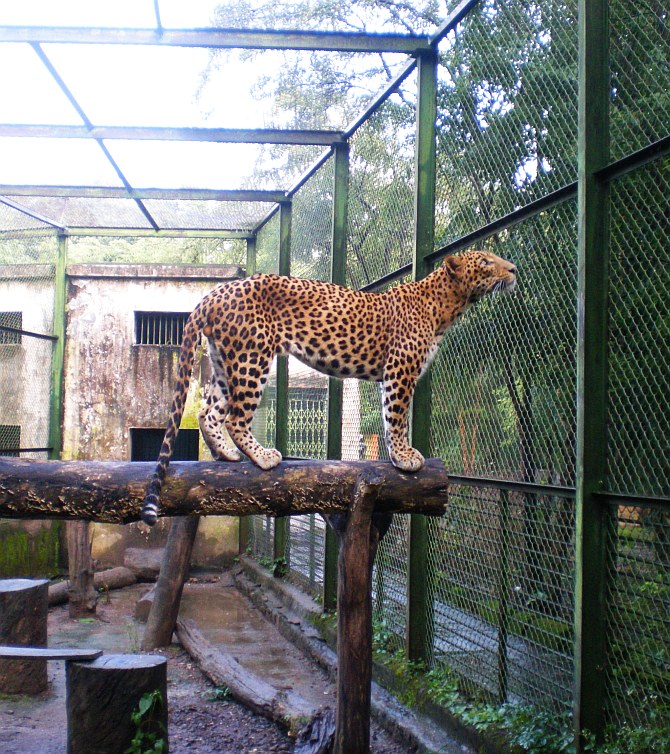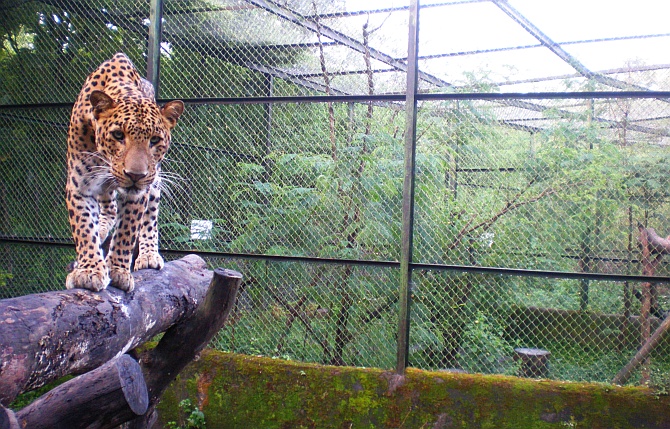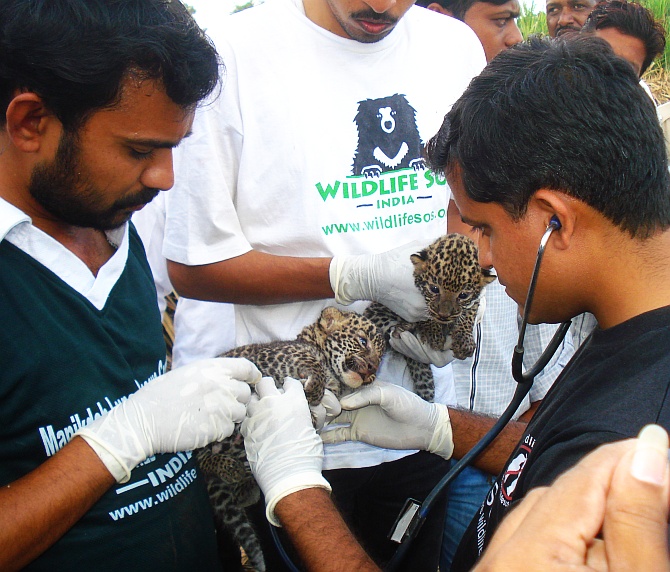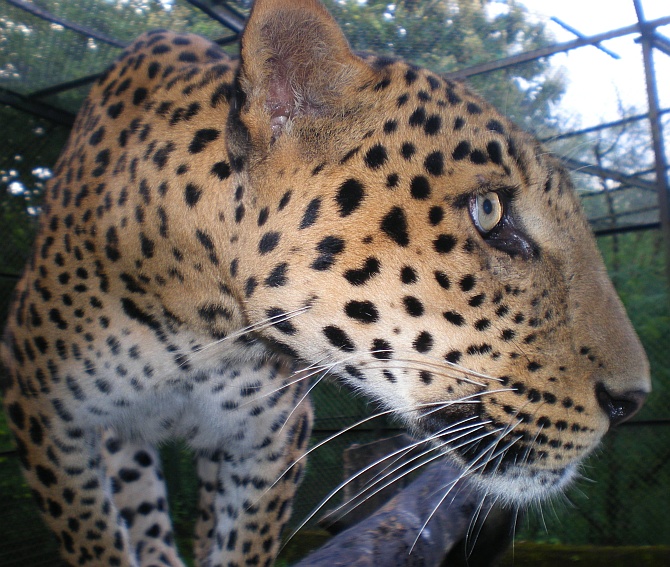 | « Back to article | Print this article |
Wounded and battered, they wait to be released in the wild
Three female leopards, aged 5-7 years are waiting in a 10x10 cage to be released after recovering from back injuries which they sustained after falling in a dry well in Rahuri, Ahmednagar district. They were brought to the Manikdoh Leopard Rehabilitation Center, about 90 kms from Pune after being rescued by a team of Maharashtra's forest officials and the experts at the MLRC. Devidas Deshpande reports.
"They will be released after about a month. They have recovered fully but they are not yet strong enough and there are other issues such as immunity, vigour etc. So we have kept them here,” said Dr Ajay Deshmukh, in-charge of the center.
Click NEXT to read more...
Wounded and battered, they wait to be released in the wild
These three guests are an addition to already housed 26 leopards residing in the center near Junnar, not far from the Shivneri Fort, birthplace of Chhatrapati Shivaji. Manikdoh houses the biggest leopard rehabilitation center in Maharashtra which is also the only rehabilitation center in India exclusively for leopards.
Currently there are 8 male and the rest female leopards are there but the center only keeps them or releases those which are fit to be released. No mating is done at the center because that is not allowed by the Central Zoo Authority.
Deshmukh said, “Each leopard is assigned a unique number embedded on the chip fitted on their tail-end and is identified by that number.”
Click NEXT to read more...
Wounded and battered, they wait to be released in the wild
Until now, these leopards were kept in the 10x10 ft cages but with new stricter guidelines from CZA, the new cages are being devised which measure 250 square metres. However, the outside visitors are not allowed to the MLRC and the citizens have an option to adopt the animals for specific period during which they are given full updates on their 'adopted' animal and a visit to the center.
Maharashtra Forest Minister Babanrao Pachpute had proposed to create 'leopard safari' where the visitors could see the leopard roaming while they themselves remained in cages, on the lines of Thailand. The proposal is still in pipeline with CZA.
The MLRC is run jointly by the forest department of government of Maharashtra and Wildlife SOS, a non-governmental organisation based in New Delhi. Originally a brain child of the former forest officer in Pune Ashok Khadse, the center came up with state government's initiative. The sugar belt of Maharashtra, extending from Nashik to Kolhapur, allowed the leopards to live, hide and flourish in the sugarcane fields.
Click NEXT to read more...
Wounded and battered, they wait to be released in the wild
The abundance of leopards caused people-animal conflict and about 106 leopards were captured from 1999 to 2001. Once established, all the captured leopards were brought to the MLRC. The state government maintained the center from 2001 to 2007 and later handed it over to the wildlife SOS. The center has a total 10 employees among which six are from NGO and four from the state government.
Deshmukh said, “Right now, we release all leopards except the four categories. Those which were caught and brought up here cannot survive on their own in the wild. Then another category is of those who are too old or ailing. Another category is that of handicapped ones because they could also not survive on their own. Also, the leopards which are prone to enter the human territories are also kept here.”
Click NEXT to read more...
Wounded and battered, they wait to be released in the wild
The case of Ganesh, a four-and-a-half year old leopard brought in from Dolara in Surgana taluka of Nashik district is a classic example of how the handicapped leopard became a member here. When it was brought at the centre, it was blind, beaten and weighed just 36 kg. It was operated upon by the experts at MLR center and a veterinary-surgeon couple from Mumbai. Now it can see from one eye. Yet another leopard is left with one severed leg.
In early days, the center accommodated any leopard which was brought here. But now, the emphasis is more on releasing them in the wild again.
“We have 10 instances when the cubs were brought to us and we took back to the forest. The mother of the cubs returned to the spot from where they were picked up and took them away. Only two male leopards were kept here four years ago because there mother was killed by the villagers,” Deshmukh said.
The leopards are brought from as far as Aurangabad. The majority however are brought from Ahmednagar, Pune and Nashik districts.
TOP photo features you missed last week
Click on MORE to see another PHOTO features...





